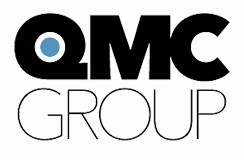Imagine the ability to incorporate variable data into your web, flexo and sheet-fed environments. Attendees of Drupa 2016 came away with a desire for variable data printing that utilized a combination of traditional printing and digital technologies. Manufacturers have invested in the development of inline inkjet heads on standard printing equipment and it looks like the investment is paying off. Printers who need the greatest impact from their investments are seeing the potential of the hybrid printing market.
Web and Flexo Lead the Way

Web offset has taken the lead in the hybrid market. Inline imprinting systems such as the Kodak Prosper S10 allows a one step solution for direct mail operations. Printers have questioned if the digital aspect slows down high-speed web? They have found the cost balanced out by the elimination of downtimes caused by plate changes. The decrease of consumable costs due to hybrid adjustments is a welcome savings.
Flexible packaging and label printing is the fastest growing market segment in the print world. In 2014, flexo accounted for $31 billion in U.S. sales. Label printing should grow even faster. The combination of flexo and digital give printers the opportunity to produce the unique products that customers love.
- Variable data high quality labels
- Tickets for events
- Individualized tags
- Trackable & traceable product versions
- Labels & packaging that links consumers with other products
Hybrid Printing on Display
One of the highlights of Drupa 2016 was the KBA VariJET 106 powered by Xerox. This hybrid press is a true combination of offset and digital technologies. Optional units added before and after the inkjet system provide extra features such as coating and die cutting. The press is in the last stages of development and will be available for delivery in 2017. It won’t take long before other press manufacturers have their own hybrid products. Competition is always a good thing.
Hybrid Highway
Hybrid printing offers a way for printers to get into variable data in a cost effective way. No longer is it necessary to invest in all offset or all digital equipment. Cost and quality will drive the hybrid market because value added is added value. Hybrid technologies are providing printers the ability to maximize marketing and sales efforts. Paving the way for opportunities to expand and grow.

